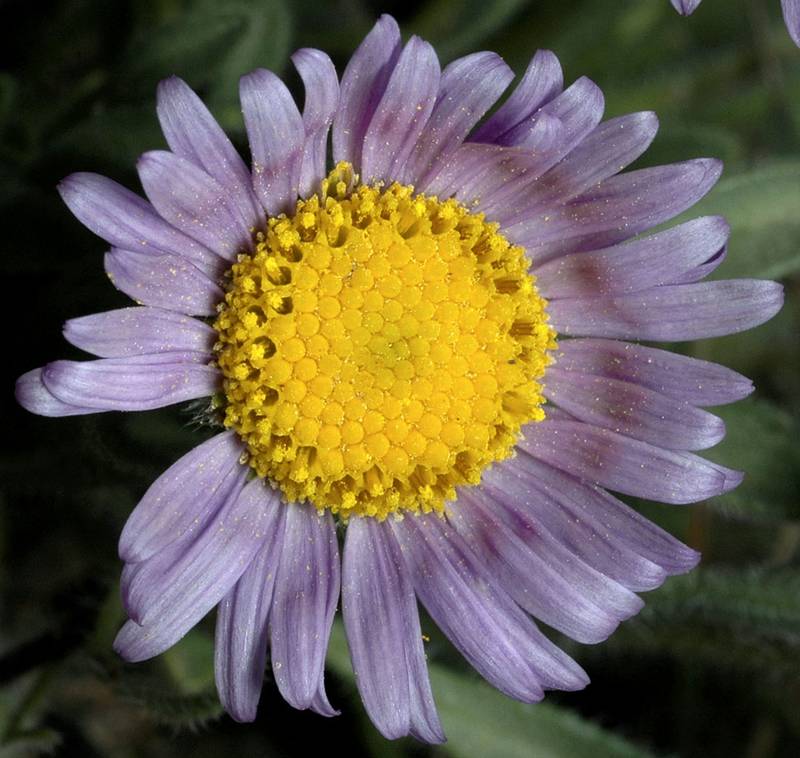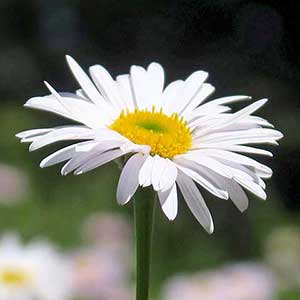|
hairy-seeded daisy, cushion fleabane
|
Alice's fleabane, Eastwood's fleabane
|
| Taprooted perennial with short-branched, woody base; stems to 15 cm. high; plants more or less spreading-hairy and glandular throughout. |
Perennial usually from a rhizome, 3-8 dm. tall, amply leafy, covered with stiff, short, blunt hairs. |
Basal leaves linear-oblanceolate to spatulate, up to 8 cm. long and 12 mm. wide, the cauline leaves reduced. |
Leaves entire or coarsely toothed, the lower ones up to 20 cm. long including the petiole, and 3.5 cm. wide, the middle and upper leaves sessile, narrowly lanceolate to oblong. |
Heads solitary, hemispheric, the disk 9-20 mm. wide; involucre 5-9 mm. high; rays 15-45, pale pink or purple to deep violet, 4-15 mm. long and 1.3-3.6 mm. wide; pappus of 20-30 capillary bristles. |
Heads 1-several, the disk 12-20 mm. wide; involucral bracts loose, pointed, sub-equal, with conspicuous stiff, white hairs on the lower half, and glands on the upper portion; rays 45-80, pistillate, 10-15 mm. long and 2-3 mm. wide, white to pink-purple; disk corollas 3-4 mm. long, yellow; pappus simple. |
Achenes densely covered with long, silky hairs. |
Achenes usually 2-nerved. |
|
|
|
|
| April-June |
June-August |
| Dry, open, typically rocky areas, often with sagebrush. |
Moist to fairly dry, sandy, open areas at middle elevations in the mountains. |
Occurring east of the Cascades crest in Washington; British Columbia to Oregon, east to western Idaho.
|
Occurring west of the Cascades crest in the Olympic Mountains and southward in Washington; Washington to California.
|
| Native |
Native |
| Not of concern |
Sensitive in Washington (WANHP) |
E. acris, E. aliceae, E. annuus, E. aureus, E. basalticus, E. bloomeri, E. caespitosus, E. chrysopsidis, E. compositus, E. corymbosus, E. davisii, E. disparipilus, E. divergens, E. eatonii, E. elatus, E. filifolius, E. flettii, E. glacialis, E. howellii, E. inornatus, E. karvinskianus, E. leibergii, E. linearis, E. lonchophyllus, E. nivalis, E. oreganus, E. peregrinus, E. philadelphicus, E. piperianus, E. pumilus, E. salishii, E. speciosus, E. strigosus, E. subtrinervis |
E. acris, E. annuus, E. aureus, E. basalticus, E. bloomeri, E. caespitosus, E. chrysopsidis, E. compositus, E. corymbosus, E. davisii, E. disparipilus, E. divergens, E. eatonii, E. elatus, E. filifolius, E. flettii, E. glacialis, E. howellii, E. inornatus, E. karvinskianus, E. leibergii, E. linearis, E. lonchophyllus, E. nivalis, E. oreganus, E. peregrinus, E. philadelphicus, E. piperianus, E. poliospermus, E. pumilus, E. salishii, E. speciosus, E. strigosus, E. subtrinervis |
|
|
| |
BC,
OR,
WA
Flora NW,
PNW Herbaria
WildflowerSearch
iNaturalist (observations)
USDA Plants Database



